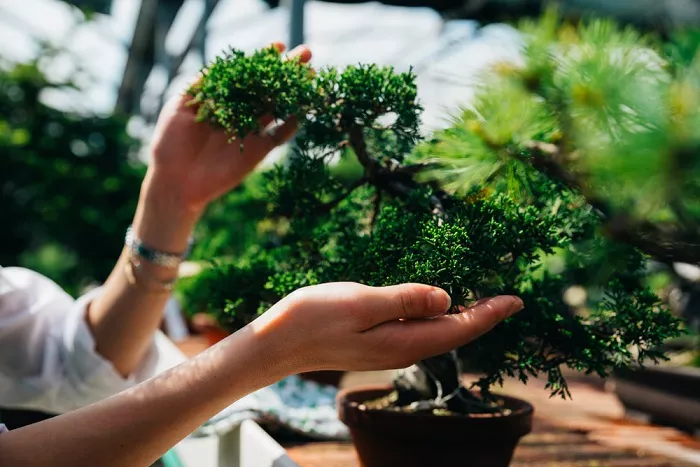Bonsai trees are like delicate little green treasures. They bring the beauty of nature into our homes. But to keep them thriving, understanding their sunlight needs is crucial. Sunlight is the energy source for their growth, and getting it just right can make all the difference. Let’s dive into the world of bonsai and sunlight.
The Role of Sunlight in Bonsai Growth
Sunlight is the lifeblood of a bonsai tree. It powers the process of photosynthesis, where the tree converts light energy into chemical energy to fuel its growth. Without enough sunlight, a bonsai tree may grow weak and spindly, with poor foliage development. On the other hand, too much direct sunlight can scorch the leaves and damage the tree. Finding the right balance is key to maintaining a healthy and vibrant bonsai.
Different Bonsai Species and Their Sunlight Requirements
Bonsai trees come in a wide variety of species, each with its own unique sunlight needs. For example, juniper bonsai trees generally prefer full sun and can thrive in six to eight hours of direct sunlight per day. Their needles are adapted to handle the intense light, which helps them maintain their lush green color and compact growth.
In contrast, some tropical bonsai species like the ficus may need a bit less direct sunlight. They can do well with bright, indirect light for most of the day, with only a few hours of morning sun. Understanding the specific needs of your bonsai species is essential for providing the right amount of sunlight.
Factors Affecting Sunlight Needs
Several factors can influence how much sunlight a bonsai tree requires. One important factor is the climate. In warmer climates, bonsai trees may need more shade to protect them from the intense midday sun. The heat can dry out the soil quickly and cause the leaves to wilt. In cooler climates, however, more direct sunlight may be beneficial to help the tree stay warm and active. The age of the bonsai tree also plays a role. Younger trees may be more sensitive to sunlight and require some protection, while older, more established trees can handle more direct exposure.
Additionally, the health of the tree is crucial. A tree that is recovering from pruning or repotting may need some shade to reduce stress and allow it to heal properly.
Signs of Insufficient or Excessive Sunlight
It’s important to be able to recognize the signs that your bonsai tree is not getting the right amount of sunlight. If a bonsai tree is not getting enough sunlight, you may notice that the leaves become pale and yellowish. The tree may also grow tall and spindly as it stretches towards the light. On the other hand, if a bonsai tree is getting too much sunlight, the leaves may turn brown and crispy around the edges. They may also develop sunburn spots, which can be harmful to the tree. By paying close attention to these signs, you can adjust the sunlight conditions to better suit your bonsai tree.
Creating the Ideal Sunlight Environment
To provide the ideal sunlight environment for your bonsai tree, there are several strategies you can use. If you have an outdoor bonsai, you can place it in a location that receives the right amount of sunlight for its species. For example, you can position a juniper bonsai in a sunny spot that gets plenty of morning and afternoon sun.
If you have an indoor bonsai, you can use artificial lighting to supplement natural sunlight. LED grow lights are a great option, as they provide a full spectrum of light that mimics natural sunlight. You can place the lights about 6 to 12 inches above the tree and set them on a timer to provide the right amount of light each day.
Seasonal Adjustments for Sunlight
As the seasons change, so do the sunlight needs of your bonsai tree. In the spring and summer, when the days are longer and the sun is stronger, you may need to provide more shade for your bonsai tree. You can use a shade cloth or move the tree to a partially shaded area during the hottest part of the day. In the fall and winter, when the days are shorter and the sun is weaker, you may need to provide more direct sunlight to help the tree stay active. You can move the tree to a sunnier spot or increase the amount of artificial lighting it receives.
Practical Tips for Managing Sunlight
Here are some practical tips for managing the sunlight needs of your bonsai tree.
First, observe your tree closely and look for any signs of stress. If you notice that the leaves are changing color or developing spots, adjust the sunlight conditions accordingly.
Second, consider using a light meter to measure the amount of light your tree is receiving. This can help you make more accurate adjustments.
Third, be mindful of the location of your tree. If you have an outdoor bonsai, make sure it is not placed too close to a wall or other structure that may block sunlight.
Finally, don’t forget to water your bonsai tree regularly, as the right amount of water is also crucial for its health.
Conclusion
Sunlight is a vital element in the care of bonsai trees. By understanding the specific sunlight needs of your bonsai species, paying attention to signs of stress, and creating the ideal sunlight environment, you can help your bonsai tree thrive. With a little care and attention, your bonsai tree will continue to bring beauty and tranquility to your home for years to come.


